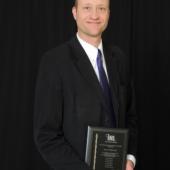
Session Co-Chairs: B. A. Moyer, D. Schuster
| 8:00AM | Introduction |
| 8:10AM | Recycling of Precious Metals, M. Caffarey |
| 8:40AM | Enhancing the Recovery and Recycling Efficiency of Critical Materials for Clean Energy, E. S. Peterson |
| 9:10AM | Microbial Mediated Recovery of Recycled (REE); D. W. Reed*, D. F. Bruhn, D. L. Daubaras, V. S. Thompson, Y. Jiao, M. C. Yung |
| 9:40AM | Panel Discussion (Moderator: B. A. Moyer) |
Speaker Abstracts
Recycling of precious metals
M. Caffarey, Umicore
This presentation focuses on the recycling of precious metals containing materials in relation to the criticality of various elements. How end of life materials get collected and prepared beneficially so that the highest recycling efficiency can be achieved in recovering the critical elements. We will illustrate the evolution of Umicore in its role as refiner and recycler and its key strengths in the area of critical metal recovery. Present Platinum Group Metals recycling challenges will be discussed with their sustainability issues and ability or inability to reach their full industrial potential.
Enhancing the recovery and recycling efficiency of critical materials for clean energy
E. Peterson, Idaho National Laboratory
This presentation will describe opportunities for enhancing recovery and recycling efficiencies to enhance the supply chain for critical materials (CM) for clean energy together with the technology-development program being undertaken within the newly funded Critical Materials Institute (CMI) in the US. Defining its critical supply needs in terms of clean-energy technologies such as wind turbines, electric vehicles, and energy-efficient lighting, the US Department of Energy identified five rare earth elements (REE) as critical materials and several other elements, such as lithium, as near-critical. The efficient recovery, reuse and recycling focus area within CMI conducts research directed at enhancing recovery reuse and recycling while reducing bottlenecks in the supply chain from recycled material processing. To enhance recycling CM, projects seek to improve REE recovery and “beneficiation” using electrochemical, molten salt, and bioleaching processes for recovering REE from phosphors, magnets, and other sources. Enhanced separation technologies are being developed to separate highly dilute lanthanides using membrane assisted solvent extraction, and super critical fluids are beijng used to dissolve and separate REE from waste streams. A modeling effort seeks to locate and assist with magnet recovery from diverse items such as computer disc drives and refrigeration units in an entirely automated system. Industrial collaborations are key components from the outset of planning to ensure a positive outcome in terms of commercialized technologies that have real impact on the supply of CM for clean energy.
Microbial mediated recovery of recycled REE
D. Reed, Idaho National Laboratory
The objective of this work is to develop and deploy a biological strategy for recovery of rare earth elements (REE) from recyclable materials that will complement existing chemical methods. Technology that includes REE bioleaching and/or bioadsorption enrichment or separation can be integrated into different steps in the existing industrial pipeline. A successful biotechnology will result in an efficient, environmentally friendly, low cost process that can be applied beneficially to recyclable material and/or ore that has low metal content and/or refractory material. The challenges and opportunities associated with microbial mediated REE recovery and the progress of our work will be discussed.
Microorganisms have been reported to react with various metal ions including REE by leaching and adsorption. Microorganisms with these unique properties have been obtained from culture collections or environmental locations based on the desired microbial properties such as thermoacidophilic growth, REE tolerance, and acid production. First, soil and water samples were obtained from acid mine drainage (Iron Mountain), acidic hot springs (Norris Geyser Basin), REE ores (RER Bull Hill mine) and phosphate mine sediments (Monsanto Blackfoot Bridge). Second, microbes were enriched for either sulfur-oxidation at low pH or for phosphate solubilization capacity. Third, isolated candidates were subjected to REE dissolution studies. Ongoing investigations are evaluating the capacity for acid production, optimization of acid production, and capacity for REE dissolution from recyclable feedstocks such as retorted phosphor powders, regenerated cracking catalyst, electronic scrap and/or phosphate mine tailings. Future work will include feasibility studies for bioleaching of recycled material, development of bioadsorption capacity, continuous bioprocessing for REE recovery.




